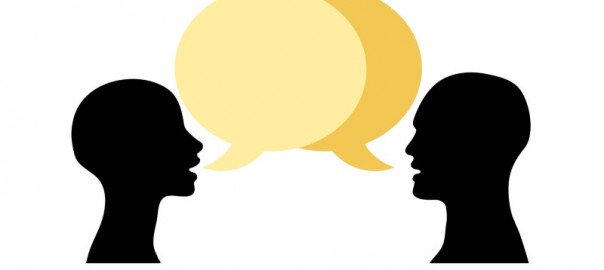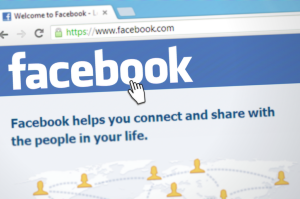Columnist Jordan Kretchmer discusses how marketers can build a relationship with consumers that will inspire loyalty and set them apart from the competition.
 How many times have you been at a party, stuck talking to that one person who won’t shut up? The narcissistic, self-centered bore who flips every conversation back to their favorite topic: themselves. My guess would be too many.
How many times have you been at a party, stuck talking to that one person who won’t shut up? The narcissistic, self-centered bore who flips every conversation back to their favorite topic: themselves. My guess would be too many.
I know those are the people I want to stay as far away from as possible. I want meaningful interactions that go both ways, whether it’s with someone at a party, with one of my favorite brands or with my own customers.
It used to be that brands could be the raconteurs holding court in front of a group of adoring fans. In today’s hyper-competitive world, we need to be as interested in our customers as they are in us.
Most brands are behind the eight ball when it comes to making marketing feel more like a conversation and less like a lecture. Despite the vast array of social media and user-generated content, most brands still talk at people, force-feeding them their latest value prop.
That’s one reason so many people don’t trust brands. Consumers may love the products, but the brands don’t connect with them in an authentic and engaging way. According to Nielsen:
92 percent of consumers around the world say they trust earned media, such as recommendations from friends and family, above all other forms of advertising.
Too often, brands feel like, well, brands, not human entities capable of two-way relationships. But our customers are human, and they decide if they like our brands, recommend our services or share pictures of our products.
Fostering two-way conversations with our consumers not only encourages sincere connections, but it also sells them on why they should buy our products over our competitors’. It builds a relationship on the foundation of trust, leading to a sustainable bottom line and long-term loyalty.
So how can our brands go from being the blowhard at the party everyone avoids to the coveted pal people look for?
Make It Fun
People don’t buy or share things to please us; they do things because they want to. Rather than throwing corporate jargon at them, why not give people what they want? Relatable, fun, relevant content generated by people just like them.
Tourism Australia, for example, could easily rely on professionally branded photos to lure people into visiting their breathtaking country. Instead, they partnered with GIGA Selfie to offer Japanese visitors something simple that visitors can engage with at will, without all the trappings of traditional marketing.
The execution is simple: Travelers stand on designated platforms, open the “GIGA Selfie” app and click a button. Then, a distant camera snaps their picture, capturing the traveler in a gorgeous panorama.
The supersized selfie campaign doesn’t feel like branded marketing. It gives people something they actually want — the experience of traveling to a beautiful place. But more importantly, the campaign gives them the evidence to show off that experience.
If you’re marketing at your consumers, there’s a big chance you’re not turning any heads. If you flip the concept of marketing from at to with, you will make a real impact on your bottom line.
Evoke Emotions
Memorable, emotional and impactful connections are the keys to genuine brand loyalty. To form sustainable relationships, great brands seduce customers through real connections — connections that make people feel excited, sad, hopeful, even angry.
Let’s look at Procter & Gamble’s “Like a Girl” campaign. P&G sells a wide variety of products: personal care, household cleaning, laundry detergents, even prescription drugs.
These are not products to inspire passion and enthusiasm. People fall in love with this company because it makes an emotional, impactful connection.
The video divides people into two groups: adolescent girls and the rest of us. Ask a young boy to throw like a girl, and the result is obvious. Ask women, and interestingly enough, they’ve internalized the same gender bias boys did.
But ask an adolescent girl, and something magical happens. She runs and throws her hardest, with all the power and strength her compatriots lacked.
Forming an emotional attachment with our consumers keeps our brands top-of-mind while setting us apart from the competition.
Pass The Mic
Discovering new ideas can be difficult, especially for brands too deeply rooted in their products. The prescription to overcome a case of brand tunnel vision is a fresh, unbiased perspective. This is where consumers come in.
Nothing is more powerful and authentic than the voices of the people who love your brand. In our connected world, it’s never been easier to reach those people.
Consumers make a brand successful. Give them a space to populate ideas and discuss their thoughts, and you’ll open up a goldmine of product ideas.
Starbucks created My Starbucks Idea, a hub for all Starbucks coffee lovers to share ideas and suggestions and have their voices heard. Starbucks actually listens to the conversations in the hub, implementing changes and coming up with fresh innovations based on customer feedback.
Over the years, the crowd-sourced space has consistently increased in both popularity and success, leading to the invention of Frappuccino Happy Hour, free Wi-Fi, cake pops and sugar-free syrups.

My Starbucks Idea allows users to interact with each other, vote for ideas and comment on threads they find interesting. Starbucks gets a direct line into those interactions, getting direct exposure to the most popular ideas and the concerns they should address to improve customer experience.
If you’re not creating authentic, two-way conversations by your marketing efforts, connecting with customers will be an uphill battle.
Let’s face it, it doesn’t matter how many dollars you spend on marketing. If your brand message doesn’t resonate, you’ve wasted your money.
Some opinions expressed in this article may be those of a guest author and not necessarily Marketing Land. Staff authors are listed here.
(Some images used under license from Shutterstock.com.)
Marketing Land – Internet Marketing News, Strategies & Tips
(116)
Report Post







